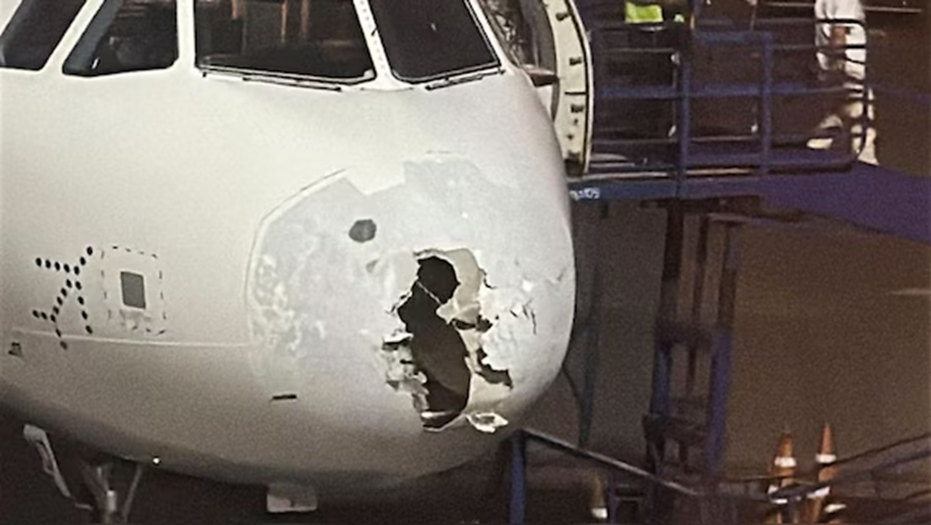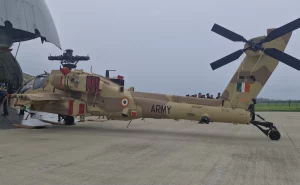Amid the ongoing tensions with India, Pakistan refused to help an Indian airline in difficult times as one of its flights sought help to avoid turbulence. The incident happened when an IndiGo Airlines pilot on a Delhi-Srinagar flight, which was faced with a sudden hailstorm on Wednesday evening, urged Lahore Air Traffic Control to allow it to briefly use the Pakistani airspace so that it could avoid the turbulence, but the request was rejected, the news agency reported while quoting sources.
Pakistan Rejected Indigo Pilot’s Request To Use Its Airspace
Why In News
- Amid the ongoing tensions with India, Pakistan refused to help an Indian airline in difficult times as one of its flights sought help to avoid turbulence. The incident happened when an IndiGo Airlines pilot on a Delhi-Srinagar flight, which was faced with a sudden hailstorm on Wednesday evening, urged Lahore Air Traffic Control to allow it to briefly use the Pakistani airspace so that it could avoid the turbulence, but the request was rejected, the news agency reported while quoting sources.
What All Happened
- When the plane was flying over Amritsar, the pilot raised an alarm after noticing turbulence due to adverse weather. He then contacted the Lahore ATC, seeking permission to use the airspace. Denied that, the pilot continued onto the original path as scheduled, braving severe turbulence. On Wednesday, an IndiGo flight carrying 227 passengers from Delhi to Srinagar was caught in terrifying midair turbulence, sending those onboard into a panic and causing visible damage to the aircraft’s nose.
- Flight 6E2142 was nearing its destination when it was battered by a hailstorm. The pilot declared an emergency with Air Traffic Control before managing to safely land the aircraft at Srinagar Airport at 6.30 pm. However, the dramatic ordeal left passengers shaken.
- Reports from the scene confirmed that all passengers and crew members were evacuated safely from the aircraft after landing. However, the aircraft sustained damage significant enough for the airline to declare it “Aircraft on Ground” (AOG), grounding it for urgent repairs. A sudden hailstorm with heavy rain struck Delhi-NCR late Wednesday evening, triggering an abrupt shift in the weather.
- A five-member delegation of Trinamool Congress comprising Derek O’Brien, Nadimul Haque, Sagarika Ghose, Manas Bhunia, and Mamata Thakur was on the flight.
- The unexpected weather disruption forced the suspension or diversion of several domestic and international flights at Indira Gandhi International (IGI) Airport.
- It is worth noting that following the Pahalgam attack, in which 26 civilians were gunned down by terrorists, and the subsequent hostilites between the two countries, Pakistan closed its airspace to India. Pakistani flights are not allowed to use Indian airspace either.
Why Did Aircraft Suddenly Gain & Then Lose Altitude
- Turbulence usually occurs due to sudden changes in wind speed or direction—particularly near clouds, storms, or jet streams. In this case, the aircraft encountered a rapidly developing thunderstorm, which produced violent updrafts and downdrafts that significantly disturbed the plane’s stability.
- These vertical air movements are common in storm systems and result from uneven heating of the earth’s surface, mountainous terrain, and intense storm dynamics. During such events, air can rise or fall at very high speeds.
- Initially, the Indigo aircraft experienced an updraft—a rising column of warm air that can lift an aircraft sharply. Normally, pilots try to avoid such systems by rerouting. However, in this situation, downdrafts followed—columns of cooler air descending rapidly, which can push the aircraft downward by thousands of feet. Pilots must exercise great skill to safely navigate these conditions.
What Happened To The Indigo Flight Mid- Air
- RK Jenamani, a senior scientist at the India Meteorological Department (IMD), explained, “An updraft is a rising current of air, often found within clouds. These are driven by thermal processes—such as daytime heating—where the sun warms the ground, causing air to rise. Water vapour, being lighter than air, ascends rapidly. Conversely, a downdraft is a sinking column of air, usually triggered by cooling effects like the evaporation of cloud particles, which increases air density and drives it downward.”
What Happened To The Indigo Flight Mid- Air
- According to experts, the Delhi-Srinagar flight got caught in a strong updraft-downdraft cycle, with vertical air currents possibly displacing the aircraft by 2,000 to 6,000 feet. These thunderstorm systems can reach altitudes of up to 3 kilometres, and their intensity often matches the size of the thermal radius. Some experts noted that the flight likely encountered a microburst—a powerful downdraft known for causing severe wind shear and sudden drops in altitude.
- “During the turbulence, the flight also flew through a hailstorm. As the aircraft ascended, moisture condensed and cooled rapidly, likely forming large hailstones. These hailstones may have damaged the aircraft’s nose, as seen in the viral images,” Jenamani added.

























